What Are the Key Features to Look for in a Mold Upender for Mexican Tooling Plants?
Handling large, heavy molds in a busy tooling plant or steel mill workshop is a constant challenge. A single slip or mistake can lead to catastrophic failure. You could damage an expensive mold, costing tens of thousands of dollars to repair or replace. Worse, it could cause a serious injury to one of your team members. This operational risk creates constant background stress and can lead to slow, overly cautious procedures that become a bottleneck in your entire production line, especially when you need to perform maintenance or changeovers quickly.
When selecting a mold upender for a demanding environment like a Mexican tooling plant, the key features to look for are a robust and correctly-sized load capacity, non-negotiable safety systems including mechanical and electrical interlocks, a modern and integrable control system for automation, and a durable design that emphasizes low maintenance. These features work together to ensure the equipment is not just a tool, but a reliable, safe, and profitable asset for your operations.
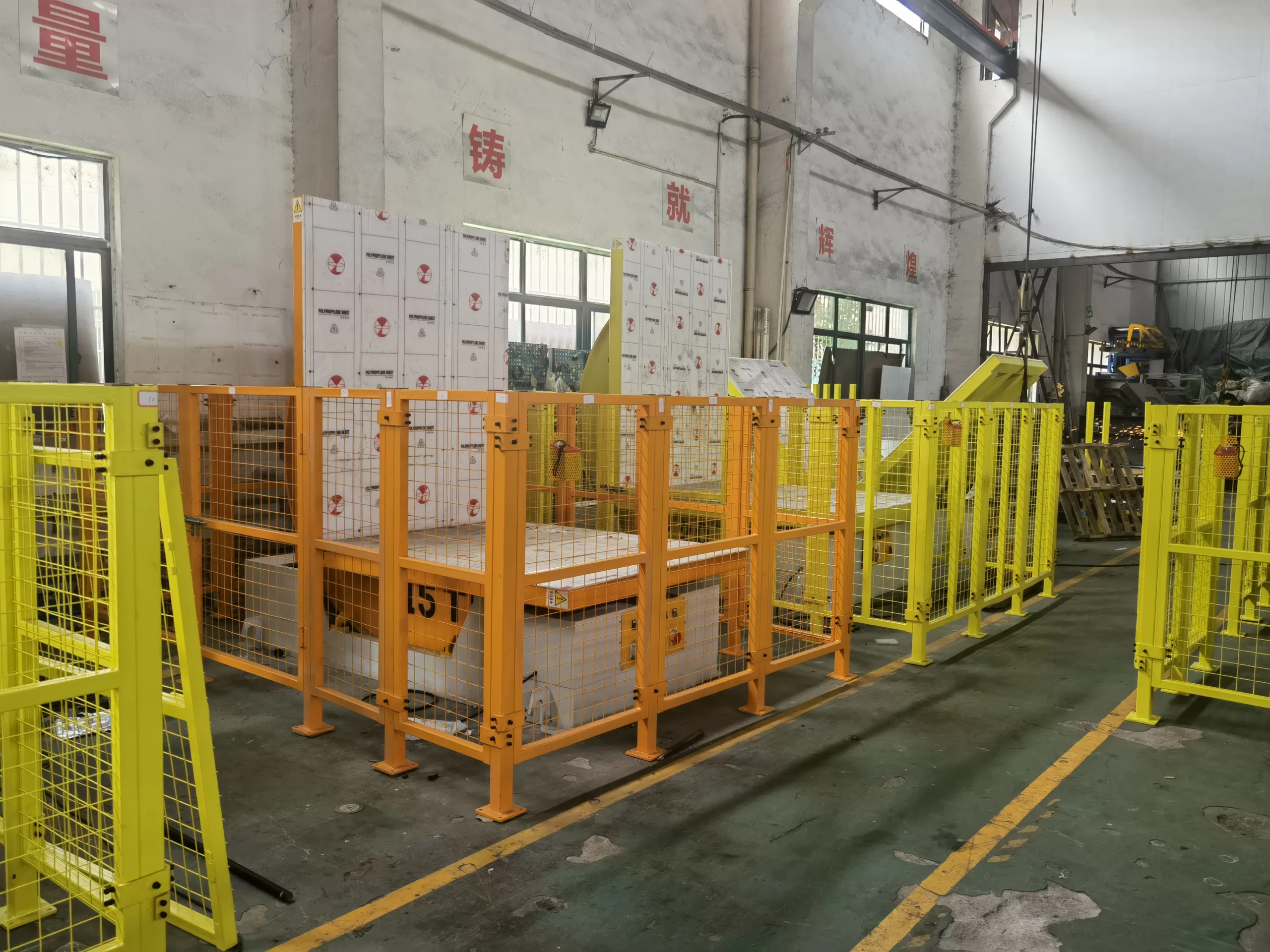
As an engineer who has spent his entire career on the factory floor, I understand the weight of these decisions. I've seen firsthand how the right piece of equipment can transform an operation, and how the wrong one can become a constant source of problems. The choice you make isn't just about flipping a mold; it's about safeguarding your assets, your people, and your plant's overall productivity. Let’s dive deeper into these specific features, so you can make a choice that serves your business not just today, but for the next 15 to 20 years.
How Can a Mold Upender's Load Capacity and Size Directly Impact Your Plant's Throughput?
You have a critical mold that needs maintenance, but your upender can't handle the weight. The entire production line downstream is waiting. Every minute of delay is lost revenue. This is a common problem when equipment capacity is an afterthought. Or perhaps the upender can handle the weight, but the table is too small for the mold's dimensions, forcing a risky, unstable lift. This puts your team and your expensive tooling in jeopardy. An upender that doesn't perfectly match your operational needs becomes a weak link in your production chain, directly limiting your plant's throughput.
A mold upender with the correct load capacity and table size is essential for maximizing your plant's throughput. It ensures that you can handle every mold in your inventory, from the smallest to the largest, without delay or compromise. This capability eliminates bottlenecks during mold changeovers and maintenance, allowing your production lines to run smoothly and predictably. It transforms a potential point of failure into a source of operational efficiency.
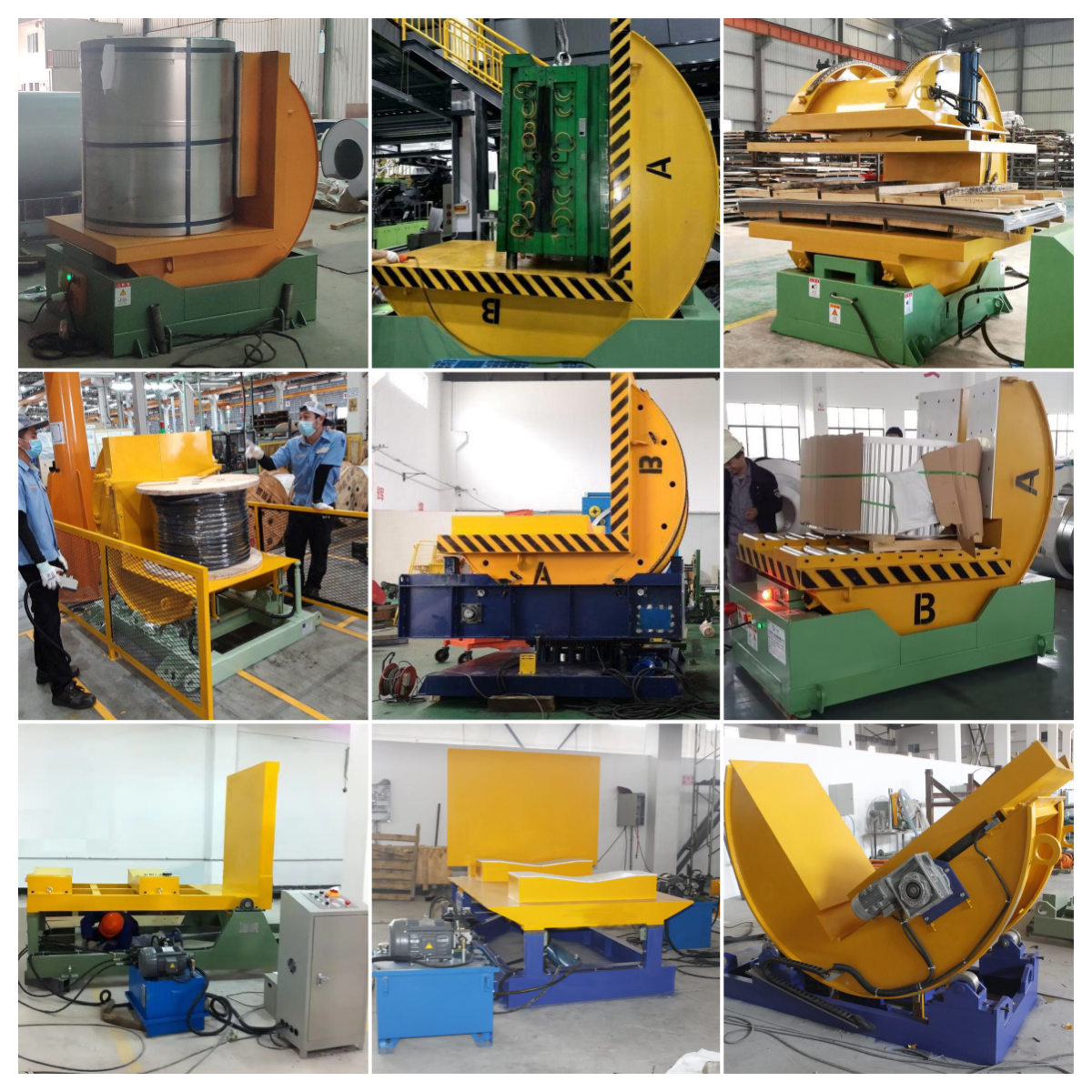
When I work with clients like Javier, who manage large-scale operations, we go beyond the simple question of "what's your heaviest mold?" The discussion needs more depth to ensure the investment pays off for years to come. A forward-thinking approach is crucial.
Calculating Your True Capacity Needs
The first step is to look at your current mold inventory. You identify the heaviest one, and that becomes your baseline. But that's not enough. As an experienced owner, you know that business is not static. You have to plan for the future.
- Future Growth: Are you planning to introduce larger product lines in the next five or ten years? These might require bigger, heavier molds. Buying an upender that only meets today's needs is a short-sighted decision. I always advise adding a safety margin of at least 20-25% to your current maximum weight. This buffer gives you flexibility and peace of mind.
- Asymmetric Loads: Not all molds have a perfectly centered point of gravity. An unevenly balanced load puts different stresses on the upender's structure and drive system. A quality machine is designed to handle these dynamic forces, but its rated capacity must be sufficient to manage these peak loads safely.
The Impact of Table Size and Dimensions
Weight is only half the story. The physical footprint of the mold is just as important. A large but relatively light mold requires a large support table to be stable during the 90-degree tilting process. If the table is too small, the mold can overhang, creating a dangerous tipping hazard.
You need to consider the length, width, and height of your largest molds. The upender’s tables (both the base and the tilting table) must be large enough to fully support the mold's footprint in both horizontal and vertical positions. This also affects your factory layout. A larger machine requires more floor space, and you need to account for clear areas around it for safe operation and forklift access.
Why the Right Size is a Strategic Decision
Choosing the right capacity and size isn't just about preventing accidents. It's about optimizing your entire workflow. In a steel mill or a large tooling plant, mold changeovers are a race against the clock. A correctly sized upender makes this process fast and seamless. The operator can confidently move the mold, knowing the machine is built for the task. This reduces changeover time, which directly contributes to achieving goals like 95% equipment uptime.
| Feature Comparison | Undersized Upender | Right-Sized Upender | Oversized Upender |
|---|---|---|---|
| Safety | High Risk. Structural failure, instability. | Optimal. Designed for the specific loads. | Safe, but inefficient. |
| Efficiency | Major Bottleneck. Can't handle all jobs. | High Throughput. Smooth workflow. | No efficiency gain over right-sized. |
| Initial Cost | Lower | Moderate | Higher |
| Long-Term ROI | Very Poor. High risk of costly failure. | Excellent. Enables high productivity. | Poor. Wasted capital, higher energy use. |
Making a calculated decision here, based on both current and future needs, is one of the clearest ways to ensure your capital investment in equipment translates directly into improved plant performance and profitability.
What Safety Features are Non-Negotiable for a Mold Upender in a Modern Mexican Factory?
Imagine an operator starts a tilting cycle, but a sudden power cut hits the plant. The massive, multi-ton mold is left suspended at a 45-degree angle. Without proper failsafe systems, it could slip, causing unimaginable damage. This isn't just a hypothetical problem; it's a real risk that keeps plant managers awake at night. In a modern factory, especially with increasing regulatory scrutiny in Mexico, relying on operator skill alone for safety is not an option. You are responsible for providing equipment that is inherently safe, protecting your people above all else.
In a modern Mexican factory, non-negotiable safety features for a mold upender must include a combination of robust systems that protect both the operator and the equipment. These essentials are multiple, easily accessible emergency stop buttons, automatic locking mechanisms that engage during a power failure, overload protection sensors to prevent misuse, and physical guards or light curtains to keep personnel out of the operational zone during a cycle. These features are not optional extras; they are the foundation of a safe and compliant operation.
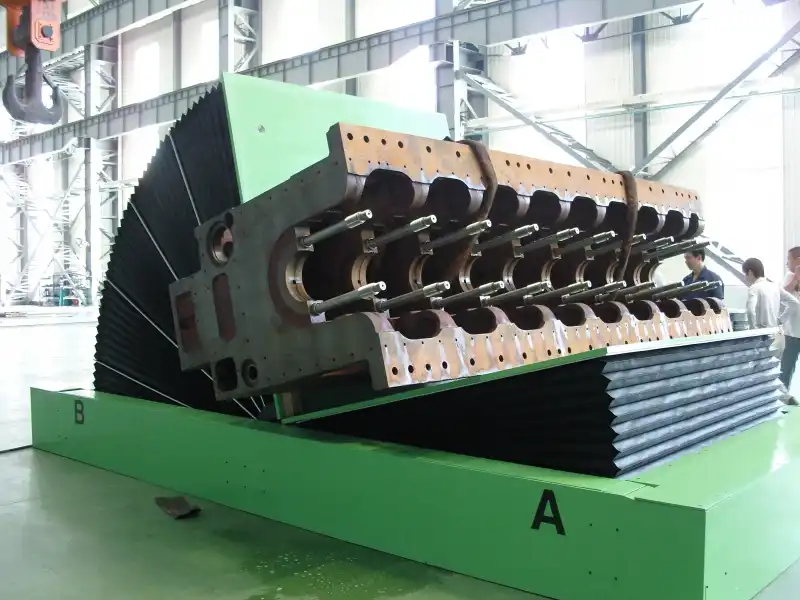
My journey from being an employee on the factory floor to owning my own manufacturing plant has taught me one thing: safety is not a line item in a budget. It is a culture, and it starts with the equipment you choose. A single accident can ruin a company's reputation and, more importantly, a person's life. That's why I am uncompromising when it comes to the safety features we build into our machines.
Mechanical and Electrical Safety Systems: A Dual Approach
You can't rely on just one type of safety system. A truly safe machine uses a layered, redundant approach.
- Electrical Systems: These are the first line of defense. This includes the prominent red emergency stop buttons placed on the main control panel and often on a remote pendant. It also includes limit switches that automatically stop the tilting motion at 0 and 90 degrees, preventing over-travel. Overload sensors are critical; they will halt the machine if an operator tries to lift a load that exceeds the rated capacity, preventing damage to the motor and structure.
- Mechanical Systems: These are the failsafe systems that protect you when electricity fails. A powerful mechanical brake on the drive motor is essential. It should engage automatically the moment power is cut, locking the machine in its current position. For hydraulic systems, check valves should lock the fluid in the cylinders, preventing any drift. For very large upenders, a mechanical locking pin or a rack-and-pinion brake system provides an additional layer of physical security.
I remember a client visit where we were discussing this. A power outage hit the building while we were talking. Later, the plant manager told me the first thing he thought of was his old equipment and what might be drifting or moving. That's the kind of worry that modern, safe equipment eliminates.
Operator Protection is Paramount
The machine itself can be secure, but you also have to protect the people working around it.
- Physical Guarding: Simple safety railings are the minimum standard. They create a clear visual and physical barrier around the machine's movement area.
- Light Curtains: For more advanced safety, light curtains are an excellent choice. These photoelectric sensors create an invisible barrier. If a person or object breaks the beam while the machine is in motion, it stops immediately. This is far more effective than just painting a line on the floor.
- Audible and Visual Alarms: A simple horn or flashing light that activates a few seconds before the cycle begins and runs during the motion is a critical feature. It alerts everyone in the vicinity, including forklift drivers and other personnel, that the machine is active.
These features are not just about meeting standards like the local NOM (Norma Oficial Mexicana) regulations; they are about building a workplace where your team feels safe and valued. That trust leads to better focus and higher productivity.
Why is Control System Integration and Automation a Game-Changer for Mold Upenders?
Your operator is using an old mold upender with a clunky, manual push-button pendant. He has to "jog" the machine, carefully inching it into position. The process is slow and entirely dependent on his skill and feel. A new operator takes twice as long and is visibly nervous. There is no data, no feedback, and no way to connect this isolated piece of machinery to your plant's sophisticated production scheduling system. This kind of technological island is a major barrier to achieving the efficiency, consistency, and data-driven management you need for a digital transformation.
An integrated and automated control system is a game-changer because it transforms a mold upender from a standalone manual tool into an intelligent, connected asset. It provides precise, repeatable, and efficient operation, reducing reliance on operator skill and minimizing cycle times. Crucially, it allows the upender to communicate with your plant's Manufacturing Execution System (MES), feeding it real-time data and receiving commands, which is a foundational step in building a truly smart and visualized factory.
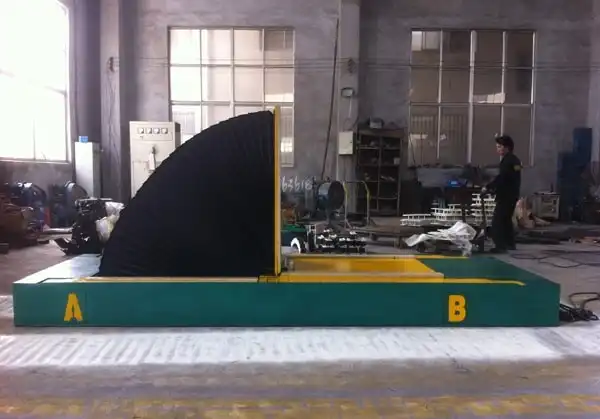
For a forward-thinking leader like Javier, who has already invested in a smart scheduling platform, the equipment must be able to participate in that ecosystem. A "dumb" machine cannot support a smart factory. This is where modern control systems make all the difference. It's a topic I am passionate about because it connects the mechanical world I grew up in with the digital future of manufacturing.
From Push-Buttons to PLCs
The brain of any modern automated equipment is the Programmable Logic Controller (PLC). Moving from a simple wired, push-button control box to a PLC-based system is a massive leap in capability.
- Reliability and Diagnostics: Old relay-based logic panels are a nightmare to troubleshoot. A single failed relay can take hours to find. A PLC, on the other hand, offers onboard diagnostics. If a sensor fails or a limit switch is stuck, the HMI (Human-Machine Interface) screen can tell the operator or maintenance technician exactly what the problem is and where to find it. This drastically reduces downtime.
- Programmability and Flexibility: With a PLC, the operation cycle is defined by software, not hardwiring. This means you can easily add features. For example, you could program a "soft start" and "soft stop" feature to smoothly accelerate and decelerate the tilting motion. This is vital for handling delicate or top-heavy molds, preventing shock loads that could damage them. You can also implement variable speed control, allowing the operator to slow the movement at critical points.
The Power of Integration for a Smart Factory
This is where the true value for a modern plant is unlocked. Integration means the mold upender stops being an island.
- Connecting to MES/ERP: A PLC with an Ethernet port can connect directly to your plant's network. It can send status updates to your MES: "Mold XYZ is now in the vertical position, ready for crane pickup." It can report on cycle times, energy usage, and error codes. This is the raw data you need for the big data analysis and production visualization that you are aiming for. Your scheduling platform can see in real-time that the mold is ready, triggering the next step in the process, like dispatching an overhead crane.
- Interlocking with Other Equipment: The upender can be electronically interlocked with other machinery. For example, it can send a signal to the overhead crane that it is safe to approach and lift the mold. It can be integrated into a larger automated cell with conveyors or AGVs (Automated Guided Vehicles) for a completely hands-off mold handling process. This is the path to higher levels of automation and reducing labor costs.
What Level of Automation is Right for You?
Automation is not an all-or-nothing proposition. You can choose the level that fits your operation and budget.
| Level of Automation | Description | Best For | Key Benefit |
|---|---|---|---|
| Manual Control | Operator uses hold-to-run buttons. | Small shops, infrequent use. | Lowest initial cost. |
| Semi-Automatic | Operator presses a single "start cycle" button. Machine completes the full 90-degree tilt automatically. | Most common industrial applications. | Consistency, speed, and safety. |
| Fully Automatic | Integrated with sensors and other equipment. Cycle starts based on external signals (e.g., AGV arrival). | High-volume, fully automated production lines. | Maximum throughput, minimal labor. |
For a large steel mill's tooling workshop, a semi-automatic system with a PLC and network connectivity is often the sweet spot. It provides the consistency, safety, and data integration needed for a modern factory without the complexity and cost of a fully automated, lights-out system. It empowers you to achieve your goals of digitalization and efficiency.
How Does the Durability and Maintenance of a Mold Upender Affect Long-Term ROI?
You purchase a new mold upender at what seems like a great price. But within a few years, the problems start. The drive motor fails. A hydraulic line bursts. The structure shows signs of fatigue. Your maintenance team is constantly busy with it, and the downtime is costing you more than you saved on the initial purchase. This is the hidden trap of choosing equipment based on price alone. A machine that is not built to last becomes a financial drain, directly attacking your profitability and making a mockery of your initial ROI calculations.
The durability and ease of maintenance of a mold upender are two of the most critical factors affecting its long-term return on investment (ROI). A machine built with high-quality steel, oversized components, and a design that simplifies maintenance will have higher uptime, lower repair costs, and a longer operational life. This reliability translates directly into sustained productivity and a significantly lower total cost of ownership, which is the true measure of a good investment.
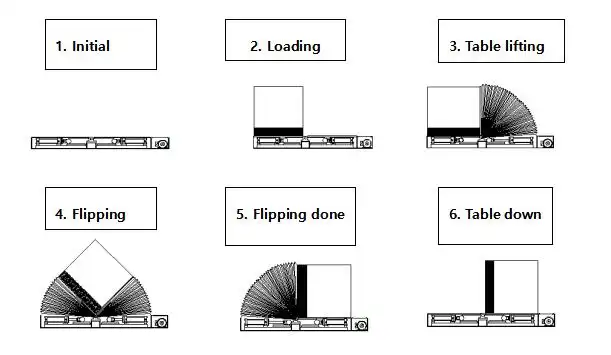
When I started my own factory, I carried with me all the lessons I learned as a young engineer. I remembered the frustration of trying to repair poorly designed machines. I remembered spending hours trying to get to a single grease point that was hidden behind a panel. I made a promise to myself that any equipment with my name on it would be built by engineers, for engineers. It would be robust, reliable, and easy to maintain.
The Anatomy of a Durable Machine
Durability isn't an accident; it's a result of conscious design choices and a commitment to quality materials.
- The Steel Structure: The foundation of the machine is its frame. Look for heavy-gauge steel plates and structural tubes. All welds should be clean, continuous, and inspected. A cheap machine might use thinner steel or skip welds to save costs, but this will lead to frame flexing and fatigue cracks under constant heavy loads.
- Key Components: The parts that do the work must be top quality. This means using motors and gearboxes from reputable international brands. It means using high-quality bearings that can handle the immense radial and axial loads. In hydraulic systems, it means using reliable pumps, valves, and high-pressure hoses. These components might increase the initial price, but they are what keeps the machine running for 15 or 20 years, not just 5. I always tell my clients, "Pay for the quality engine now, or you will pay to replace it many times later."
Designing for Easy Maintenance
A durable machine still needs regular maintenance. A great design makes this process fast and easy, minimizing downtime.
- Accessibility: This is crucial. All lubrication points (grease nipples) should be grouped together in easily accessible blocks. Electrical cabinets and hydraulic power packs should have large doors that open wide, giving technicians room to work.
- Modular Design: Using modular components is a smart strategy. If a motor fails, you should be able to unbolt the entire motor-gearbox assembly and swap in a replacement unit quickly. This gets you back online in an hour, not a day.
- Clear Documentation: The machine must come with comprehensive manuals. This includes detailed mechanical drawings, electrical schematics, hydraulic diagrams, and a clear troubleshooting guide. This empowers your own maintenance team to handle most issues without needing to wait for outside support.
The True Cost of Ownership
A savvy business owner like Javier understands that the purchase price is only the beginning of the story. The total cost of ownership (TCO) is what truly matters. Let's compare two machines over a 15-year lifespan.
| Cost Factor | Low-Cost Upender | Durable Upender |
|---|---|---|
| Initial Purchase Price | $50,000 | $75,000 |
| Annual Maintenance Cost | $4,000 | $1,000 |
| Estimated Downtime/Year | 40 hours | 5 hours |
| Cost of Downtime (@$1,000/hr) | $40,000/year | $5,000/year |
| Total Cost over 15 Years | $50k + ($44k * 15) = $710,000 | $75k + ($6k * 15) = $165,000 |
This simple table shows why focusing on durability and maintenance is essential. The initial savings on a cheaper machine are quickly erased by higher operating costs. Investing in quality from the start is the most direct path to lowering long-term operational costs and maximizing your profit margins.
Conclusion
Choosing the right mold upender is a strategic decision. Focus on capacity, safety, integration, and durability to ensure long-term reliability and profitability for your Mexican tooling plant.



